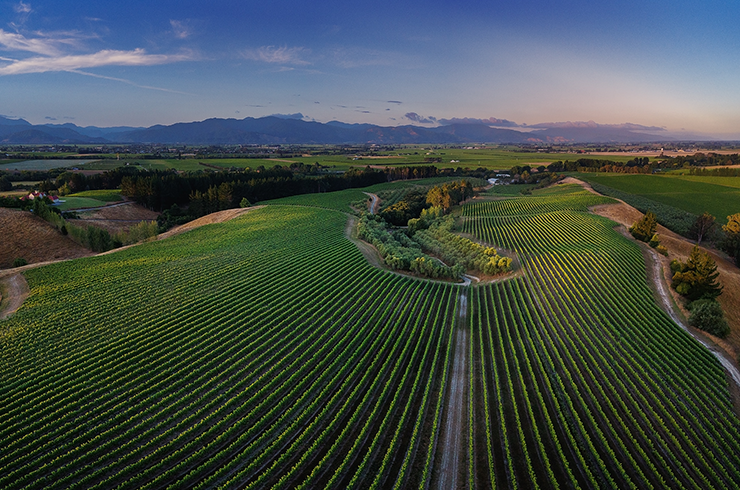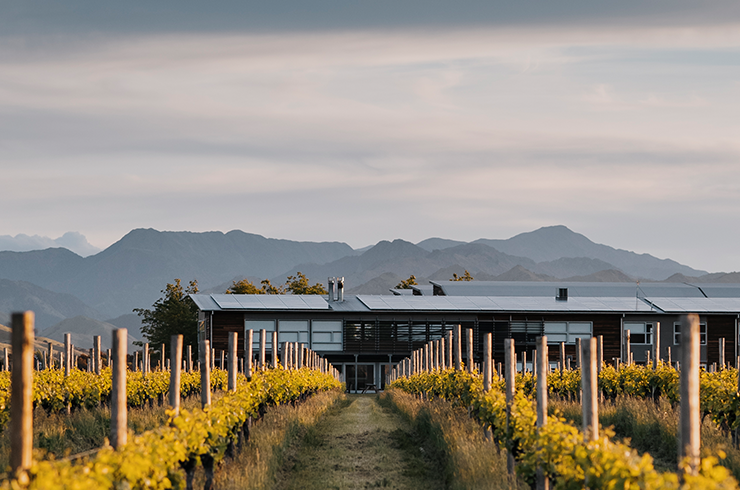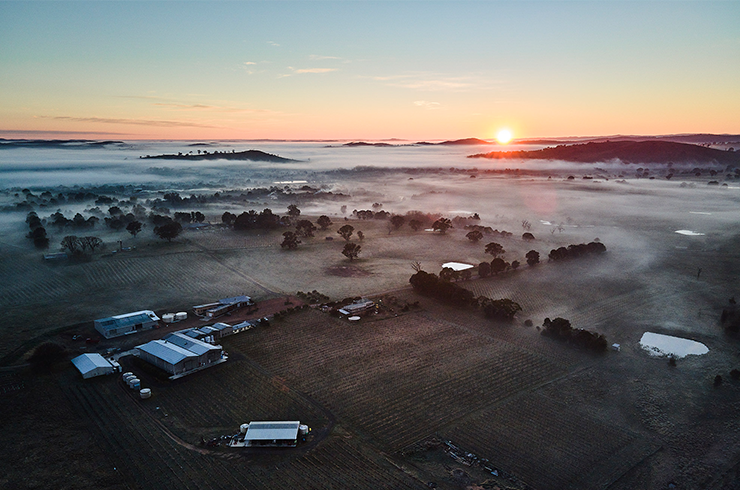“I was never under any pressure to join the family business but the reality is that it seeps into your subconscious when you’re growing up, so embarking on a career in winemaking felt like nature taking its course,” says Tahbilk’s chief executive and winemaker Alister Purbrick. The estate in the Nagambie Lakes region was purchased by the Purbrick family in 1925, reinvigorated by Alister’s grandfather, and is now being strengthened by his environmentally minded daughter Hayley.
When he started at the National Trust-classified winery in the late 1970s, Alister says the example set by his grandfather (whose name graces the highly rated Eric Stevens Purbrick range) provided inspiration to persevere in what was a “fragmented, dog-eat-dog industry”. Later, the challenges arising from the global financial crisis of 2007-08 felt surmountable upon remembering the uphill battle faced by Eric in his early days at Tahbilk. Alister explains: “My grandfather’s first vintage was 1931, in the middle of the Great Depression, when all anybody drank was fortified and beer. The fact that, encouraged by his own well-travelled father, he persevered with table wine and went on to pioneer varietal labelling over generic labels like ‘claret’ continues to inspire me even now.”
Alister says continually thinking a couple of generations ahead, and not being beholden to corporate accountants, enables family-run wineries like Tahbilk to test theories about wine styles and production techniques in a way that big business cannot. “It was only 10 years ago that people were predicting the demise of multigenerational wineries like ours,” he says, “but one has to take a medium- to long-term view to make good wine and that’s easier for families than corporations.”
Tapping into tradition
While the Tahbilk staples will forever be shiraz and marsanne, that’s not to say Alister simply took his grandfather’s word for it when considering the right varietal mix and winemaking approach. He explains: “When I started I was disappointed with the material coming off the plantings from the 1950s, but my grandfather insisted they were very good – and now they are among our best.”He continues: “Back then I was keen to change both our white and red styles, and my father and grandfather encouraged me to build facilities to do justice to our white fruit, but it was a different story for reds.
“After about two years of [constant questioning] I decided to have one final attempt at convincing my grandfather to move to a more modern style and he pulled out what he considered the best wine made under his watch – a 1962 cabernet sauvignon. It was magnificent, and it was like a lightbulb went on in my head.”
Following that seminal experience in the cellar, Alister set about fine-tuning rather than overhauling the Tahbilk red style and thereby made way for wines that James Halliday describes as ‘the ultimate distillation of Australian red wines made over the past 155 years’. After losing 40 per cent of the iconic 1860 shiraz vines to frost in 2006, such a tribute is no mean feat. Alister adds: “I’m thankful I didn’t bugger things up in the 80s and can say confidently that grandfather would be pleased with our reds and to see the whites making their own stamp.” After a slowdown at the hands of sauvignon blanc’s popularity, sales of Tahbilk’s marsanne in particular are booming.
Fresh perspective
So is there a Purbrick palate, or is training vital to ply the family trade? Alister says: “If my grandfather hadn’t made the point loud enough that it’s important to get out into the world and taste as widely as possible, the likes of Len Evans, James Halliday and Brian Croser certainly did.”
Hayley Purbrick says: “My dad has taught me that quality is king and we agree on most things wine-related, though our palates do differ in that I favour lighter bodied reds and lower alcohol.” She happily brings a fresh perspective to lab tastings, but remains more attracted to viticulture than the science of winemaking. As Tahbilk’s environment manager, Hayley has championed carboNZero accreditation and solar energy initiatives on the historic property, with organic certification the next item on her agenda.
As for her Father’s Day pick; “My recommendation if your dad likes a subtle and savoury wine would be our 2009 Old Block Cabernet Sauvignon available through cellar door, it’s a little superstar.” Perhaps it goes without saying that Alister’s perfect pick is the 1962 Reserve Bin 26 Cabernet Sauvignon, but with only about three bottles left the rest of us will have to take his word for it.
Sign up to view these tasting notes and ratings
By becoming a member of Wine Companion, you'll have access to the largest database of wines in Australia.
Latest Articles
-
Wine Lists
The 50 most popular wines of 2025
just now -
Wine Lists
A snapshot of top New Zealand wines (all rated 91 points and above)
1 day ago -
Behind the label
Taste Aotearoa: Get to know these five New Zealand wineries
1 day ago -
Wine Lists
Just in: 14 newly reviewed wines to try this December
2 days ago



